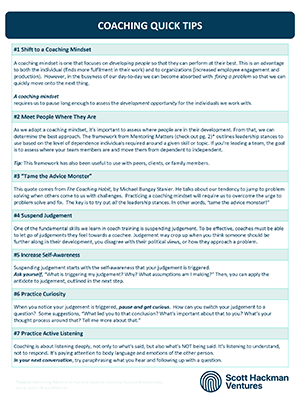Most of us, at some point in our careers, have worked in a business culture that made us feel held back. Maybe you felt hesitant to speak up in meetings, anxious about making even the smallest mistakes, or even surrounded by a facade of kindness that felt hollow and isolating. If so – it’s often because of a lack of psychological safety.
Amy Edmondson first discussed the concept of psychological safety during her PhD research. While investigating teamwork and error rates in hospitals, she observed that teams with better teamwork reported more errors. Further exploration revealed that these teams felt SECURE enough to openly report mistakes.(1)
As leaders and managers, we have a chance to make a positive impact and nurture a work culture where your team members feel safe and empowered to thrive. In this blog, we’ll explore psychological safety, its benefits for your organization, and practical steps to cultivate it.
What is psychology safety?
Psychological safety at work means feeling empowered to take risks, share ideas, ask questions, and admit mistakes without fear of reprisal amongst your team. In such environments, individuals can freely contribute and grow without the threat of punishment.(2) Dr. Timothy R. Clark, an organizational psychologist, outlines four key aspects of what psychological safety looks like(3):- Inclusion Safety: Differences aren’t just tolerated; they’re celebrated. Your team engages in consistent connecting rituals, and role titles aren’t used as status symbols.
- Learner Safety: Mistakes and failures are viewed as opportunities for growth and learning. Your team members openly share their mistakes and feel comfortable admitting when they don’t know something. Leaders are actively engaged in learning alongside their team.
- Contributor Safety: Team members are encouraged to solve problems and are enthusiastic about contributing to challenges. Autonomy is valued, and individuals have the space to approach tasks in their unique way.
- Challenger Safety: Everyone feels comfortable sharing their ideas, even if they’re not fully formed. There’s no tiptoeing around bad news, and every voice is heard and respected.
How does psychological safety benefit your organization?
Psychological safety is where great culture starts. Research has shown it’s the #1 variable in team performance, the key ingredient for creating inclusive environments, and the heart of high-performing, innovative teams.(3) Specifically, psychological safety:- Improves Cultural Clarity: A psychologically safe organization has no hidden problems or pockets of toxicity.
- Increases Retention: Consistent psychological safety attracts top talent and keeps them engaged. Applications pour in, and top talent never wants to leave.
- Increases Accountability: Micromanagement becomes unnecessary when psychological safety is present. Teams naturally hold themselves accountable, driving success.
- Improves Performance: Teams thrive when they feel psychologically safe. They become more effective, high-performing, and deeply engaged in their work.
- Increases Innovation: Consistent psychological safety fosters an environment where challenging the status quo is accepted and encouraged. This freedom to innovate leads to groundbreaking ideas and advancements.
How to Cultivate Psychological Safety
It’s important for managers to remember that cultivating psychological safety is not an instant process – it’s “a climate that we co-create, sometimes in mysterious ways.”(2) At SHV, we believe this starts with leaders who embrace a coaching mindset. A coaching mindset involves:- Self-awareness
- Active Listening
- Non-Judgement

As we adopt the coaching mindset, here are 4 tips for behaviors that build psychological safety.
- IMPACT trumps intent: We often don’t intend to harm others, yet it can happen. When our actions or words hurt someone, typical responses are “I didn’t mean to” or “that wasn’t my intent.” These responses further breakdown trust. To restore psychological safety, acknowledging impact is critical. That can look like a simple apology (“I’m sorry”) or statement of acknowledgement (“I acknowledge my actions hurt you”).
- Meet people where they are: Take time to understand where individuals are in their personal and professional growth. As a leader, your goal is to recognize your team members’ strengths and areas for development so you can tailor your support and guidance accordingly.
We’ve created a “Coaching Quick Tips” tool just for you! On the second page of this tool, it outlines leadership stances to use based on the level of dependence individuals require for a given skill or topic.
- Tame the ‘advice monster’: This quote comes from Michael Bungay Stanier, who discusses our tendency to jump to problem solving when others come to us with challenges. Instead of rushing to release the advice monster, actively listen and ask questions. Encourage them to find their own solutions rather than offering quick fixes.
- Be curious: When you notice your judgment is triggered, pause and get curious. How can you switch your judgment to a question? Some suggestions: “What led you to that conclusion? What’s important about that to you? What’s your thought process around that? Tell me more about that.”
Building psychological safety requires nurturing, patience, and a keen eye for growth. As you continue to shape your workplace, know that your efforts are not in isolation. If you find this article valuable and need more personalized assistance, explore further with a discovery call.
Coaching Quick Tips
We pulled together some coaching tips that anyone can leverage to influence a coaching culture, regardless of where their organization falls in the stages.


References
-
Redford, G., By, Redford, G., Editor, M., & 12, Nov. (2019, November 12). Amy Edmondson: Psychological safety is critically important in medicine. AAMC. https://www.aamc.org/news/amy-edmondson-psychological-safety-critically-important-medicine
-
What is psychological safety?. Harvard Business Review. (2023, February 15). https://hbr.org/2023/02/what-is-psychological-safety
-
What is psychological safety?. LeaderFactor. (n.d.). https://www.leaderfactor.com/psychological-safety
Stanier, B. (2016). The coaching habit. Box of Crayons Press.




